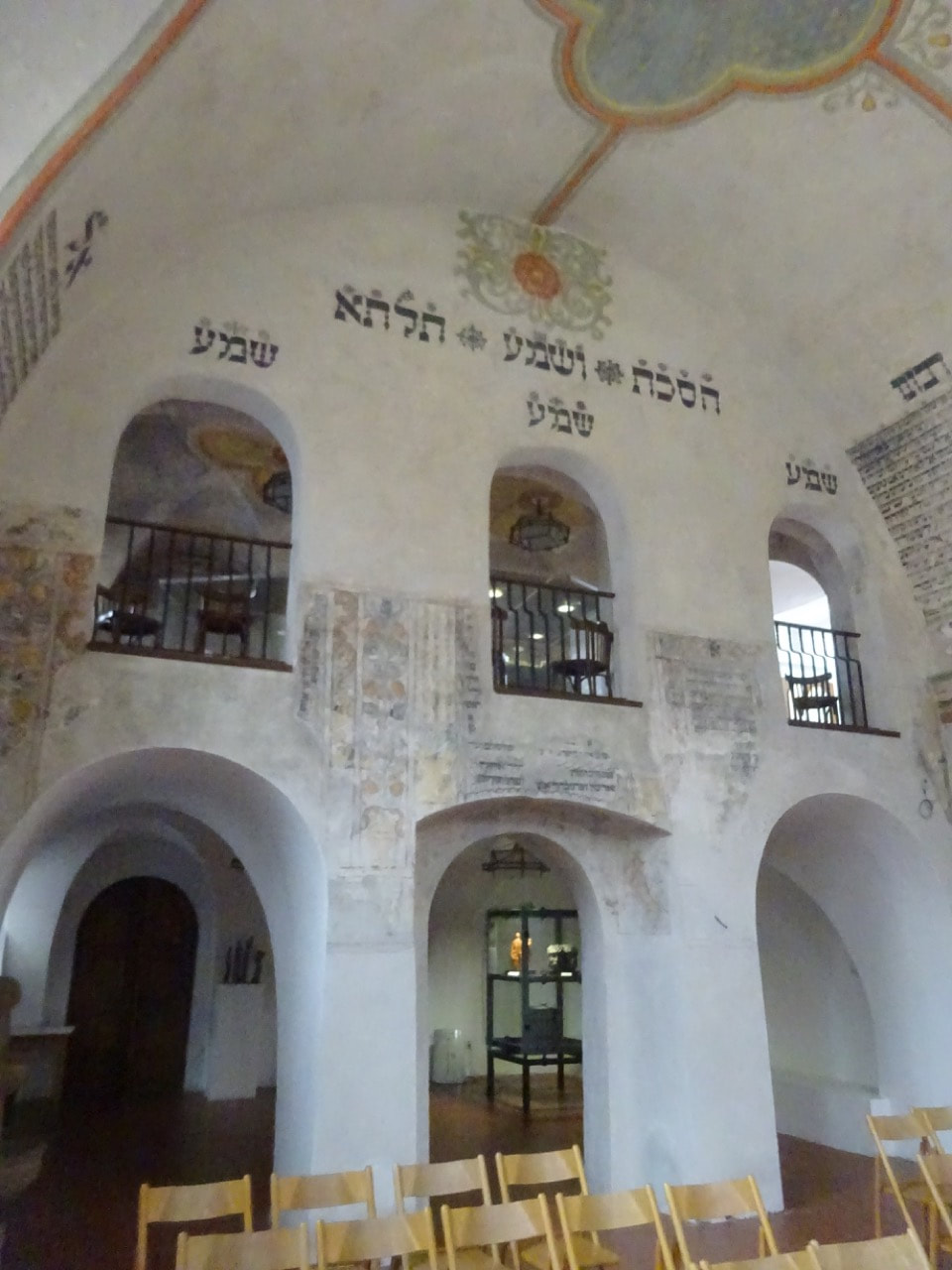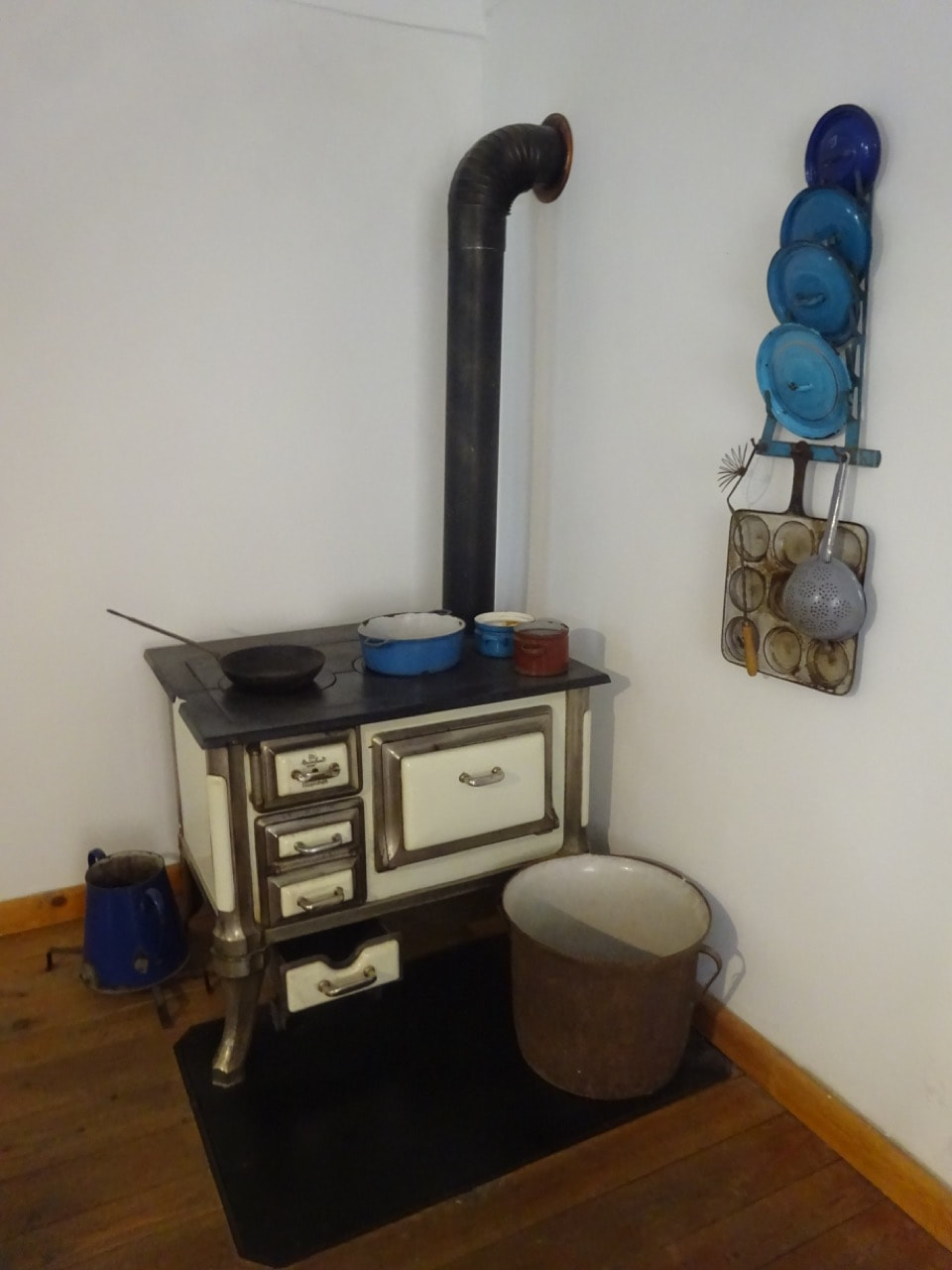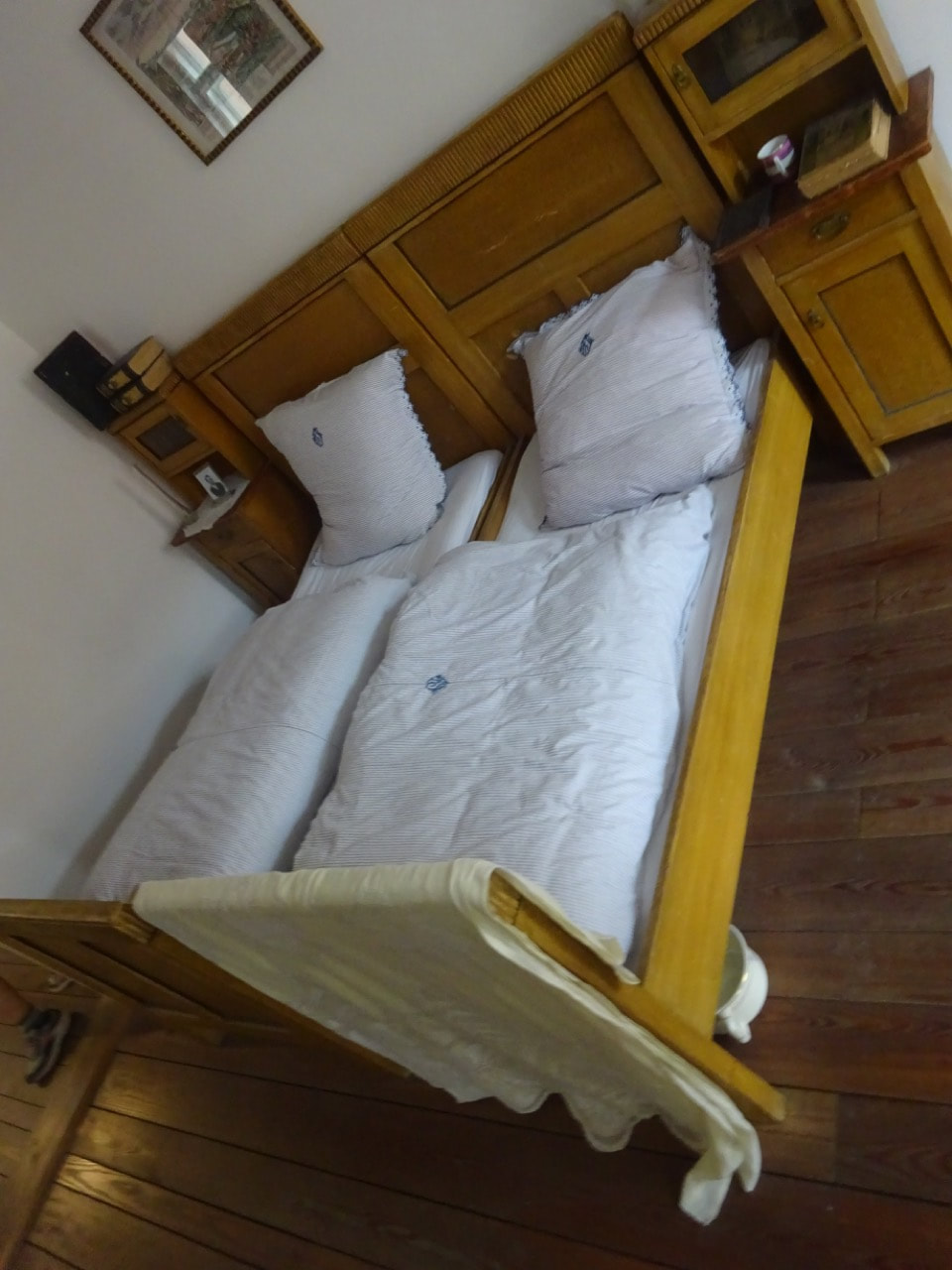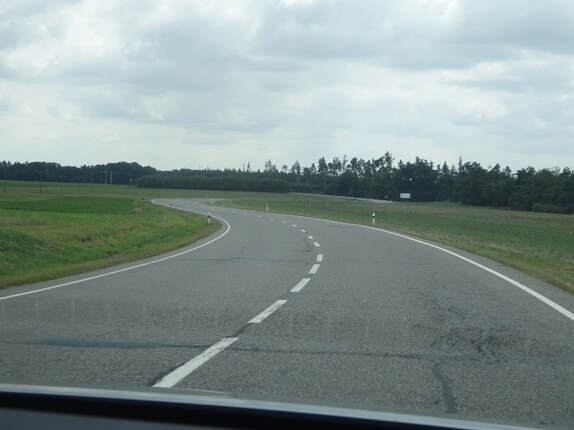This morning we woke up in Třebíč, ate our hotel breakfast, then went off to see the sights. After that we drove to Mikulov.
On Třebíč's main square:
On Třebíč's main square:
When utility work or what not is required under the cobbles, they must come up and then they go back down again. This looks like back numbing work.
This graphic map is reasonably accurate. The square is at the bottom edge, below the river. Our lodging was next to that round green tree next to the left bridge. We now begin the Jewish Quarter tour, which covers most of the rest of the graphic map.
"The Jewish Quarter of Třebíč is a neighborhood and former ghetto is situated on the north bank of the River Jihlava and is one of the best preserved in Europe. In 2003, together with the nearby Jewish Cemetery and the St. Procopius Basilica, the Jewish Quarter was inscribed on the UNESCO World Heritage List. Description
The Jewish Quarter is surrounded by rocky slopes and the river, containing 123 houses and two synagogues. Above the Quarter on a hill is the Jewish cemetery, holding roughly 4,000 gravestones. The cemetery has two sections: one starting from the 15th century, and the other starting from the 19th century.
The oldest mention of a synagogue in Třebíč archives is from 1590, although many of gravestones in the cemetery are much older. In the 16th century, orders were given to expel all Jews from the town, although they were not carried out. The older of the two synagogues still standing dates to the mid-1600s. Unusually for Europe at the time, the Jewish Quarter had its own self-government with an elected magistrate and councilors beginning in the Renaissance. In 1894, the town had a mayor and was called Zamosti (meaning 'over the bridge').
Most Jewish inhabitants (in 1890 there lived nearly 1,500 Jews, but in the 1930s only 300 of them were of Jewish faith) were deported and murdered in concentration camps by Nazi Germany during World War II. Only ten of them came back after the war. Therefore, many buildings of the Jewish town (e. g. the town hall, rabbi's office, hospital, poorhouse or school) no longer served their original purpose post war, and the houses are now owned by people of non-Jewish faith."
The neighborhood was under threat of destruction during the Communist era after WWII. The government intended to raze it, and then build blocky apartment buildings. However, the geology was found to be so unstable that the idea was abandoned, and the ghetto allowed to remain. Over the centuries, the structures had been built factoring in this geology. After the Communist era (post 1990), much refurbishment has happened, including an inflow of $40M from the United States.
This pedestrian bridge crossing the river from the square has been built to enhance touring of the Quarter:
The Jewish Quarter is surrounded by rocky slopes and the river, containing 123 houses and two synagogues. Above the Quarter on a hill is the Jewish cemetery, holding roughly 4,000 gravestones. The cemetery has two sections: one starting from the 15th century, and the other starting from the 19th century.
The oldest mention of a synagogue in Třebíč archives is from 1590, although many of gravestones in the cemetery are much older. In the 16th century, orders were given to expel all Jews from the town, although they were not carried out. The older of the two synagogues still standing dates to the mid-1600s. Unusually for Europe at the time, the Jewish Quarter had its own self-government with an elected magistrate and councilors beginning in the Renaissance. In 1894, the town had a mayor and was called Zamosti (meaning 'over the bridge').
Most Jewish inhabitants (in 1890 there lived nearly 1,500 Jews, but in the 1930s only 300 of them were of Jewish faith) were deported and murdered in concentration camps by Nazi Germany during World War II. Only ten of them came back after the war. Therefore, many buildings of the Jewish town (e. g. the town hall, rabbi's office, hospital, poorhouse or school) no longer served their original purpose post war, and the houses are now owned by people of non-Jewish faith."
The neighborhood was under threat of destruction during the Communist era after WWII. The government intended to raze it, and then build blocky apartment buildings. However, the geology was found to be so unstable that the idea was abandoned, and the ghetto allowed to remain. Over the centuries, the structures had been built factoring in this geology. After the Communist era (post 1990), much refurbishment has happened, including an inflow of $40M from the United States.
This pedestrian bridge crossing the river from the square has been built to enhance touring of the Quarter:
The restored synagogue is now a museum and a venue for small concerts.
For many years the synagogue functioned as a store house damaging the wall frescoes just off the floor.
This model of the Quarter was created by a craftsmen with 3,000 hours work.
Adjacent to the synagogue is a home restored to a look, with furnishings, of an early 20th century Jewish household.
A shop on the lower floor, typical of Jewish homes in that period:
Our lodging was in the unit at the upper right, with red tiled roof, white walls, and the two lower arches.
Our tour generally followed a route marked by this green/white emblem. Just as I snapped a photo, a dog growled and snarled from under the door.
Work on the old structures seems to continue slowly, but surely.
Now, just outside the cemetary, with the UNESCO symbol and the Star of David.
Much of the cemetary was fairly manicured and maintained, while parts of it are now in a wild state, especially on some steep sloping areas.
Anna Ingberová, born 1922, deported to Terezin Concentration Camp (Czechia) 1943, murdered 1943 Auschwitz-Birkenau (Poland). One of the nearly 300 Jews taken away from this Quarter during WWII.
----------------------------------------------------------------------------------------------------------------------------------------------------
We now depart and head to Mikulov. We pass by Dukovany Nuclear Power Station, from 1985.
We arrive in Mikulov, with the Castle on the central hill.
Chapel of St. Sebastian on Svatý Kopeček Hill overlooks the town.







































 RSS Feed
RSS Feed
